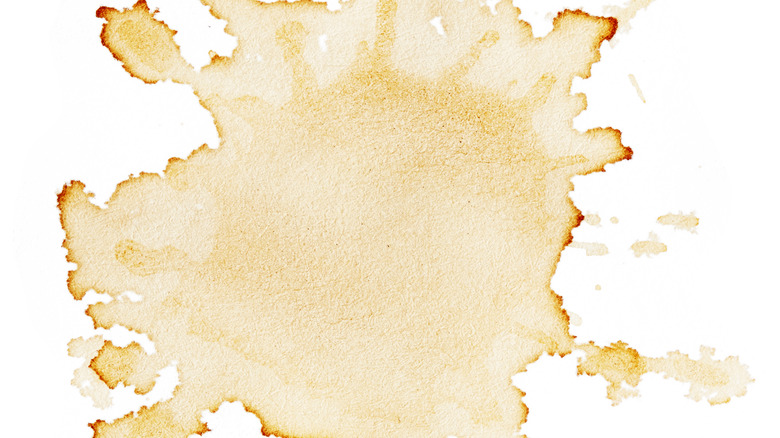Why Are Liquid Stains Darker Along The Edges?
We've all spilled coffee or tea or soda at some point in our lives. Whether that spill was on our clothes or the couch or a piece of paper we've probably thought the same thing when we saw the slowly spreading stain: "Mom is going to kill us." But after the stain had dried, the more curious among us would have noticed and wondered about the dark ring around the edge of the stain. Why wasn't the color of the stain even throughout? We certainly didn't spill more Coke on the edges; we distinctly remember spilling it in the middle of the stain.
So, what's going on here? The Royal Society of Chemistry explains that when we spill coffee on our TPS reports two things start to happen: the paper begins to absorb the coffee, and some of the coffee begins to evaporate. But this evaporation doesn't occur at the same rate all over the droplet. The fastest rate of evaporation takes place at the "three-phase boundary" where the solid surface, the liquid coffee, and the gaseous air all meet: the edge. As the water in the coffee at the edges evaporates it pulls the rest of the coffee towards it. This movement towards the edge means that most of the coffee solutes in the water will be deposited at the edge.
Neat. Why do people study this?
The reason this process is so important for scientists to understand is because there are a number of industrial processes that rely on drop-casting: applying a solid film to something by applying drops of a solution to it which evaporate, leaving the solid film behind. The best-known application of this technology is the inkjet printer. Inkjets get around the coffee ring effect by applying microscopic drops so any rings would be too small to see.
But some emerging printing technologies — like printed electronics — require the even application of a material, so scientists are hard at work finding ways to suppress this effect. One way they've found is by changing the shape of the suspended particles.
According to Nature, ellipsoidal-shaped particles tend to aggregate together, resisting the pull towards the evaporating edge, helping deposit them in an even manner. Other techniques turn the solution into a gel at the point of deposition, locking the solutes in place (via The Royal Society of Chemistry), while others modify the surface tension of the solution to control its flow during evaporation (via Nature). Being able to control or eliminate the coffee ring effect is still an ongoing area of study that will affect the bottom lines of many industries for years to come.

